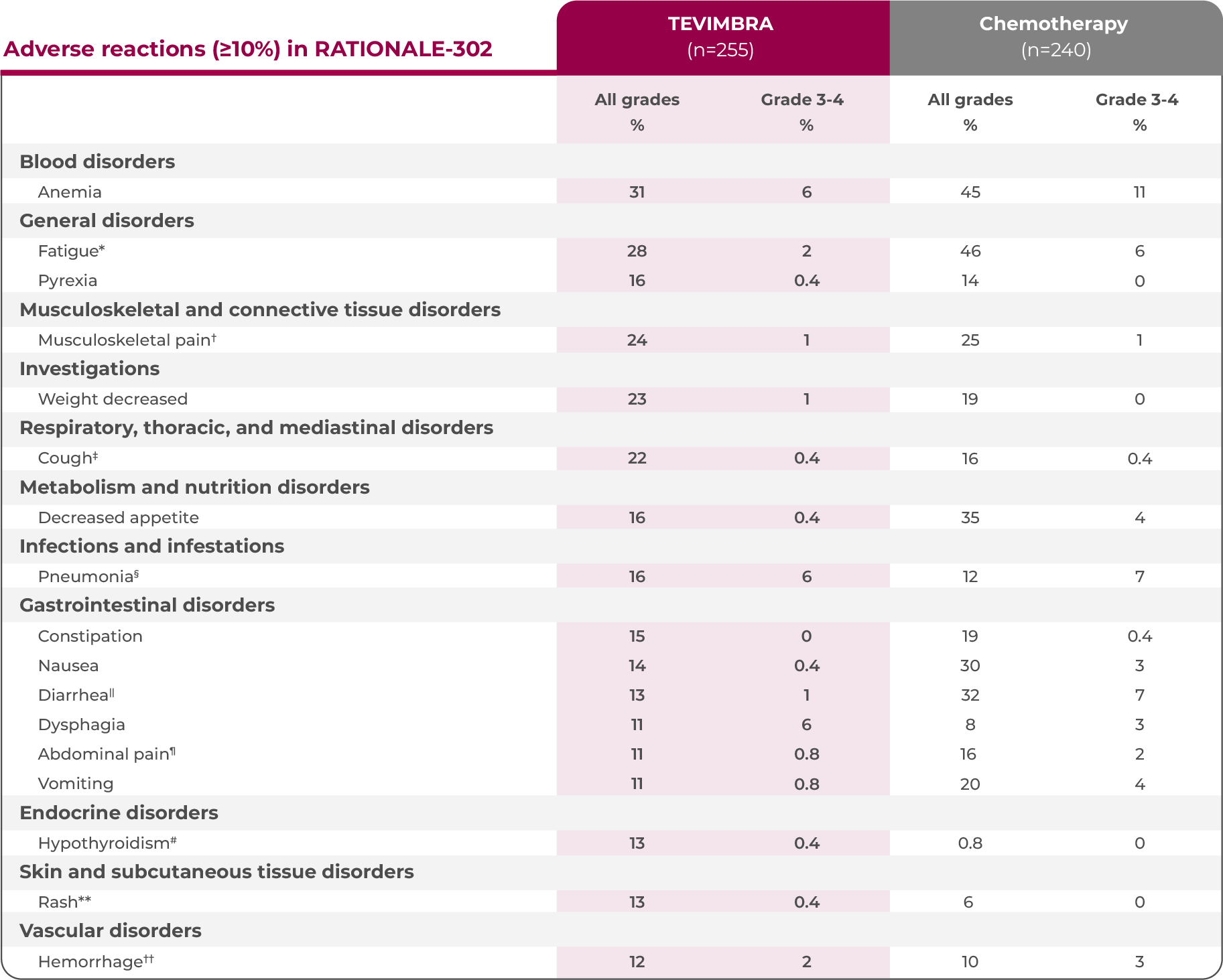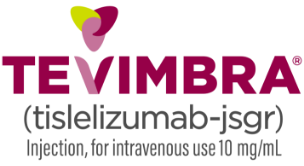A well-characterized safety profile in patients with 2L ESCC1


TRAEs leading to discontinuation2:
- 6.7% of patients receiving TEVIMBRA vs 13.8% of patients receiving chemotherapy
- TRAEs (≥1%) leading to permanent discontinuation of TEVIMBRA were immune-mediated pneumonitis and pneumonitis
imAEs leading to discontinuation2:
- 3.1% of patients receiving TEVIMBRA
- imAEs leading to discontinuation of TEVIMBRA included immune-mediated pneumonitis (5 patients [2%]), immune-mediated myositis/rhabdomyolysis (2 patients [0.8%]), and immune-mediated myocarditis (1 patient [0.4%])
*Fatigue included asthenia and malaise.
†Musculoskeletal pain included musculoskeletal pain, spinal pain, arthralgia, back pain, neck pain, musculoskeletal chest pain, myalgia, pain in extremity, noncardiac chest pain, bone pain, and arthritis.
‡Cough included productive cough and cough.
§Pneumonia included pneumonia aspiration, pneumonia bacterial, and lower respiratory tract infection.
||Diarrhea included diarrhea.
¶Abdominal pain included abdominal pain upper, abdominal pain, abdominal discomfort, abdominal pain lower, and gastrointestinal pain.
#Hypothyroidism included hypothyroidism and blood thyroid stimulating hormone increased.
**Rash included dermatitis, dermatitis acneiform, dermatitis allergic, eczema, erythema, psoriasis, rash, rash follicular, rash maculopapular, and rash pruritic.
††Hemorrhage included tumor hemorrhage, upper gastrointestinal hemorrhage, gastrointestinal hemorrhage, hemoptysis, esophageal hemorrhage, hematuria, gastric hemorrhage, epistaxis, tracheal hemorrhage, gingival bleeding, pulmonary hemorrhage, procedural hemorrhage, rectal hemorrhage, and stoma site hemorrhage.
2L, second line; ESCC, esophageal squamous cell carcinoma; imAE, immune-mediated adverse event; TEAE, treatment-emergent adverse event; TRAE, treatment-related adverse event.
References: 1. TEVIMBRA. Prescribing Information. BeOne Medicines USA, Inc.; 2025. 2. Data on file. BeOne, Ltd.
